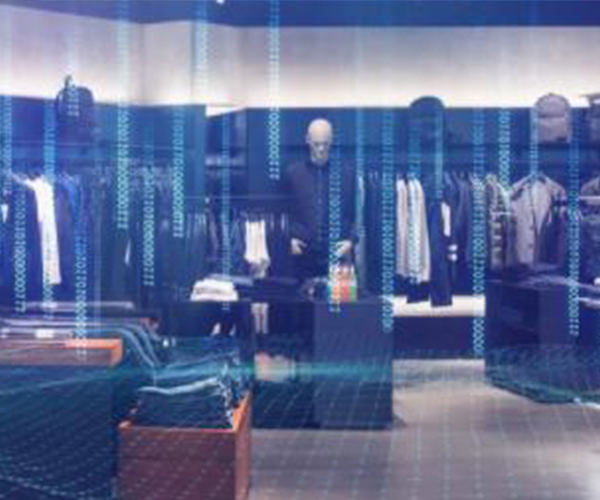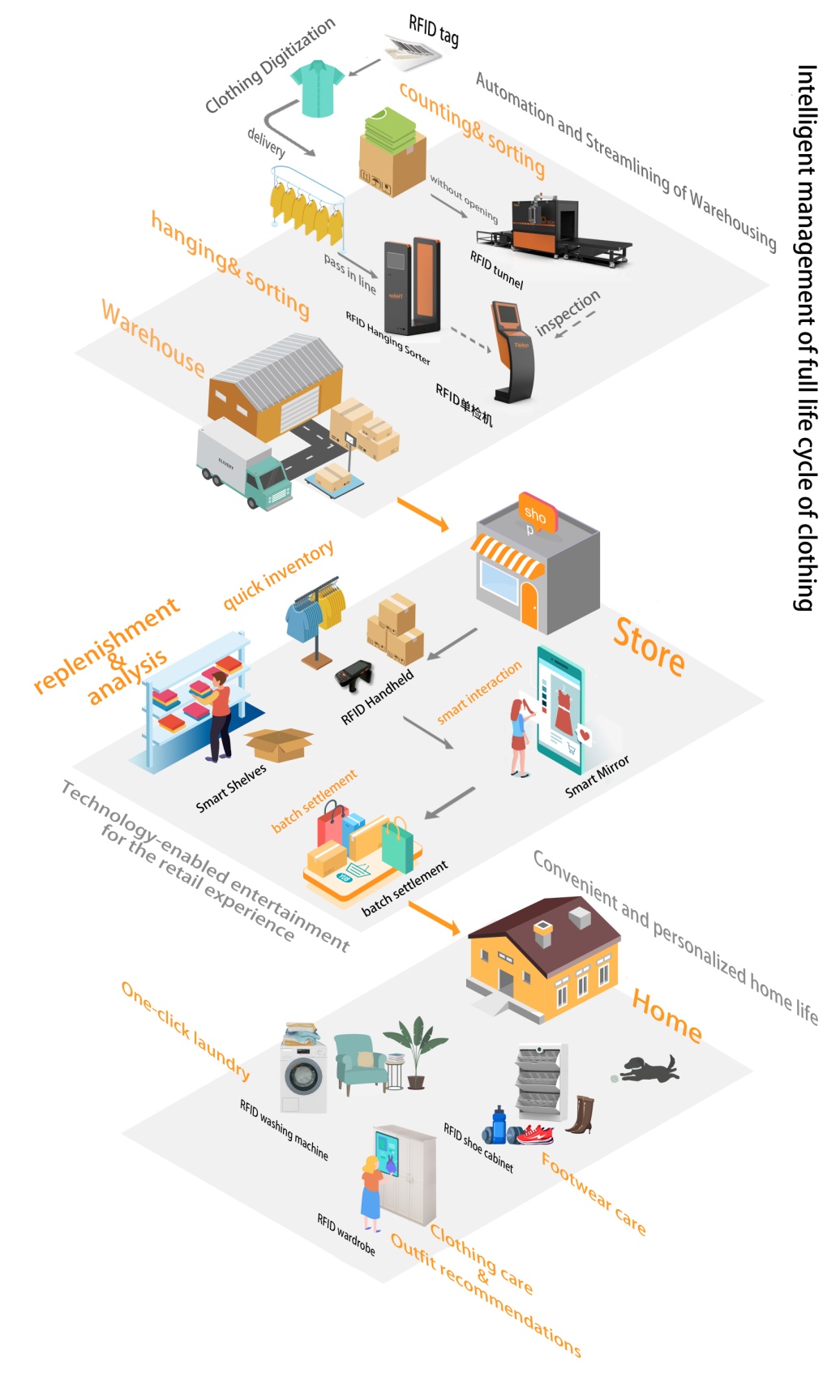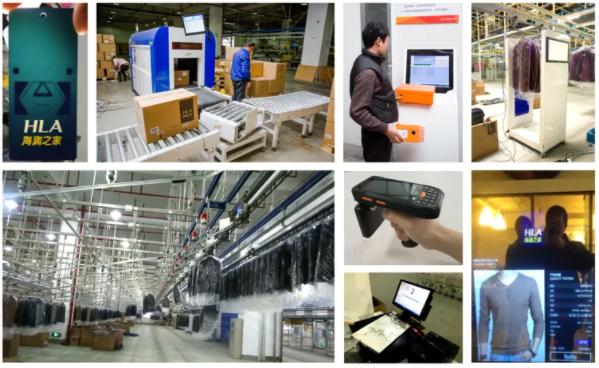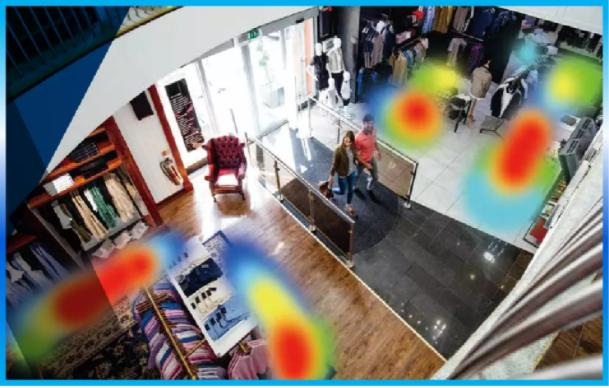Digitalization of the supply chain in the apparel and footwear industry

How will you feel about this kind of experience?
■ Automation and visualization of warehousing and logistics;
■ Logistics transportation and immediate delivery of goods;
■ Automatic receipt and delivery of goods, with products automatically entering and leaving the warehouse, order data automatically compared and reports generated to the cloud, thus doubling the efficiency.
■ Greatly reduce the use area of the operation site and the hard cost;
■ Reduce the number of employees and reduce labor costs, and HR recruitment in spring is no longer annoying;
■Shorten the product launch cycle.
■Stock management, monitoring and alarming of abnormal stock levels.
■ time-sensitive products, first-in, first-out.
■ Help to achieve zero inventory.
■Instant inventory, automatic report generation for loss and gain information.
■Intelligent replenishment of suppliers.
■RFID traceability, absolute anti-counterfeiting of products.
■Instant access to data from upstream and downstream of the supply chain.
■Elimination of counterfeit goods.
■Accurate recall of problematic products.
■Promotion of paperless office.
01 Background
Under the background of the national policy of "making manufacturing enterprises develop with high quality", the FMCG market, especially shoes and clothing enterprises, has ushered in the climax of the digital transformation of the supply chain.
Supply chain is a functional network chain structure that connects suppliers, manufacturers, distributors, retailers and end users into a whole by focusing on core enterprises, controlling information flow, logistics and capital flow, starting from purchasing raw materials, making intermediate products and final products, and finally sending products to consumers through the sales network.
RFID IOT technology, as the key technology of clothing supply chain digitization, realizes the intelligent management of the whole life cycle of clothing such as smart storage, smart retail and smart home.

Giving RFID electronic tags to clothing items, integrating RFID technology into the complete life cycle of each garment and realizing the intelligent management of the whole life cycle of each garment is not only related to reducing costs and increasing efficiency within the enterprise, but also the key to break industry barriers and realize ecological win-win.
IDC released a report on September 3 last year that by 2025, China‘s Internet of things IP connectivity will reach 10.27 billion yuan, with the largest and fastest growth rate in the consumer industry, and clothing accounts for a large proportion. The digitization of supply chain in garment industry is the key field of RFID application, and it is also the industry with the largest scale of supply chain digitization in the world.
02 Applications
Enterprises may have such concerns that they need to invest a lot of money in digital transformation. In fact, new technology has always been the main driving force for enterprises, industries and even society to reduce costs and increase efficiency. If we evaluate the project benefits from a more holistic perspective, we will find that digital technology has solved various pain points of the traditional supply chain, opened a new dimension and realized new value-added, and shaped a new brand competitive.

Since 2014, Thinkgo has been implementing RFID technology for HLA to solve the bottlenecks in the efficiency of inbound and outbound storage of large quantities of goods. After the system went online, the daily receiving capacity of the total warehouse of HLA increased by 500%; labor was reduced by 2/3; operation sites were reduced by 2/3; The daily delivery capacity was doubled and the employment was reduced by 1 / 2; The transfer capacity of warehouse is increased by 15 times; The daily processing capacity of store returns was increased by 3 times and the number of personnel was reduced by 4 / 5; The counting efficiency of stores was increased by more than 50 times and ended within half an hour.
With the development of technology and the continuous maturity of application scenarios, new application scenarios are also emerging.
For example, in the sales chain, through RFID technology, brands can collect fluctuating information such as the number of times each clothing item is picked up by customers, the number of times it is tried on, and the number of purchases made in the end shop, so that brands can clearly understand the preferences of regional users for clothing. Users can be informed of clothing information and style trends through the smart fitting mirror, and receive intelligent outfit recommendations. When settling the bill, the relevant equipment can also automatically identify the clothes and realise a quick and independent checkout.

03 Promotion
Promoting the high-quality development of enterprises through RFID Internet of things technology is not only the internal demand of shoes and clothing enterprises to reduce costs and increase efficiency, but also the inevitable choice for enterprises to deal with external competition.
Digital innovation will be the core competitiveness for enterprises in the future, you can consider Thinkgo-hz for the digitalization of your supply chain and RFID strategy.
All rights reserved Thinkgo IOT ICP:19133779
*Some materials are from the Internet, if there is infringement please inform us, we will delete * within 24 hours
yedyyip@thinkgo.cc
Tel
0086-0752-2688768
Address
Building 2, Huinan Science and Technology Innovation Center, Huizhou City, Guangdong Province, China
* Materials are from the Internet, if there is infringement please inform us, we will delete within 24 hours
